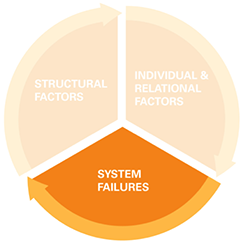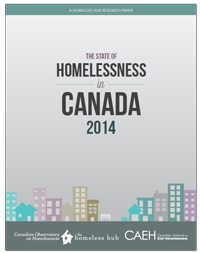Putting an End to Child and Family Homelessness in Canada
Imagine waking up in a strange place one morning and not knowing where you are, not recognizing any of your surroundings. Your mom takes you and your siblings to a cafeteria-style dining hall where you eat a bit of breakfast before taking a bus to school. After classes finish, your mom meets you in the schoolyard and you take transit across the city to another strange building for the night. This time, you are sharing a bed with your younger sister, your brother is on the couch and your mom sleeps on the floor of the living room.

 One of the leading causes of homelessness is system failures so preventing these from occurring is an important step in reducing and ending homelessness. While the system can fail in many ways the three biggest occur in child welfare, corrections and health care institutions.
One of the leading causes of homelessness is system failures so preventing these from occurring is an important step in reducing and ending homelessness. While the system can fail in many ways the three biggest occur in child welfare, corrections and health care institutions.